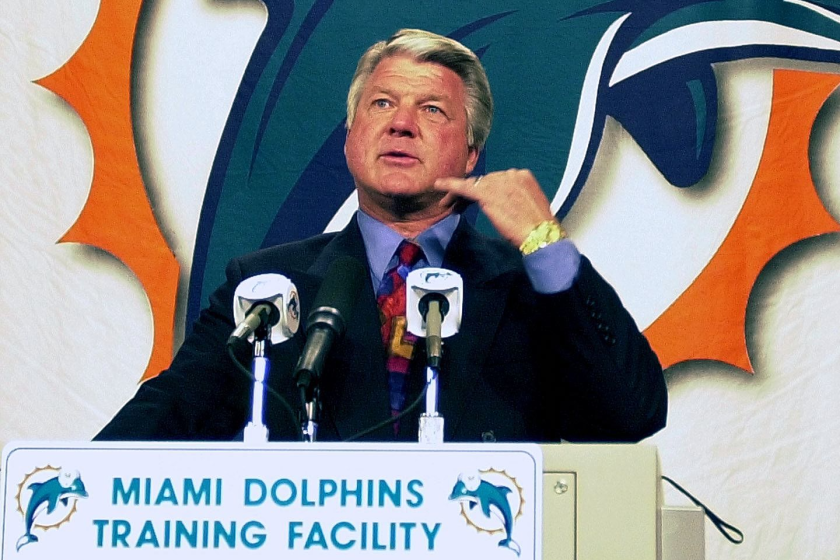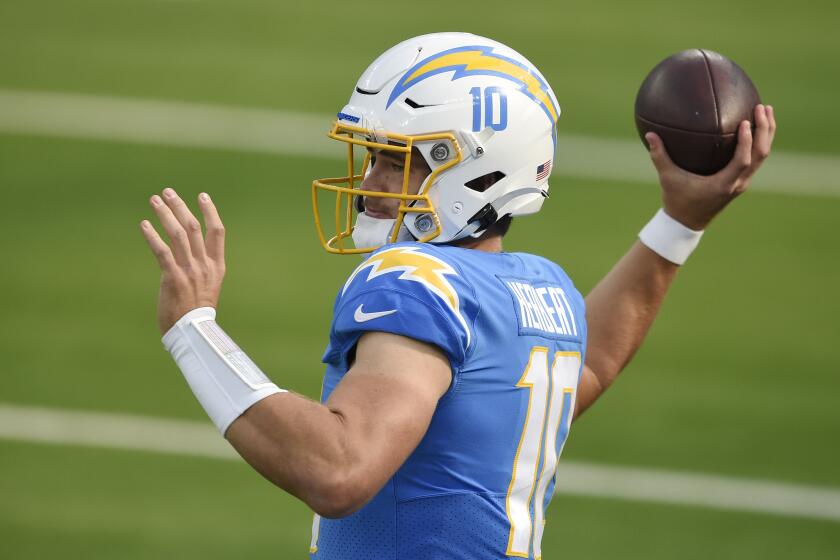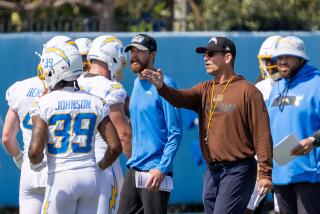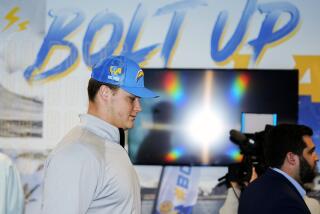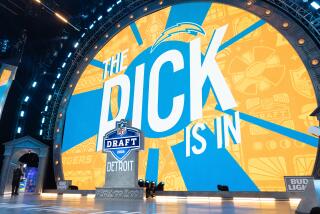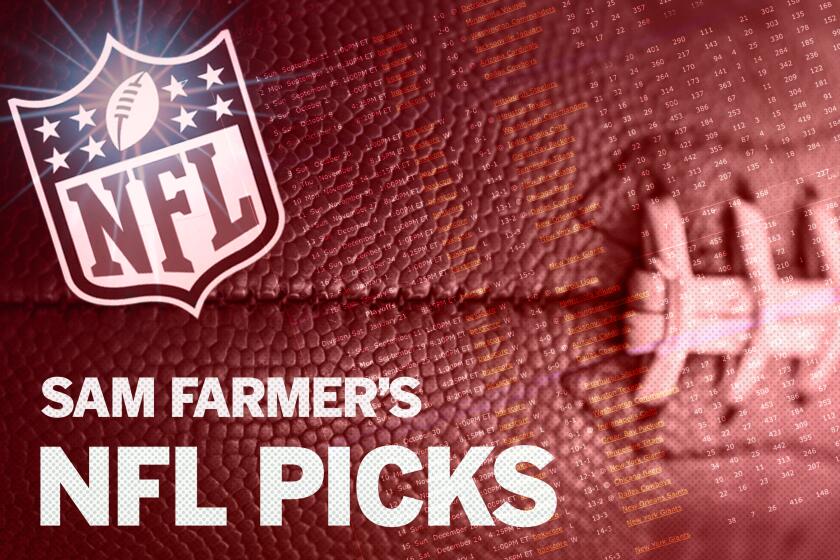Many questions for Chargers to tackle with 13th pick of NFL draft
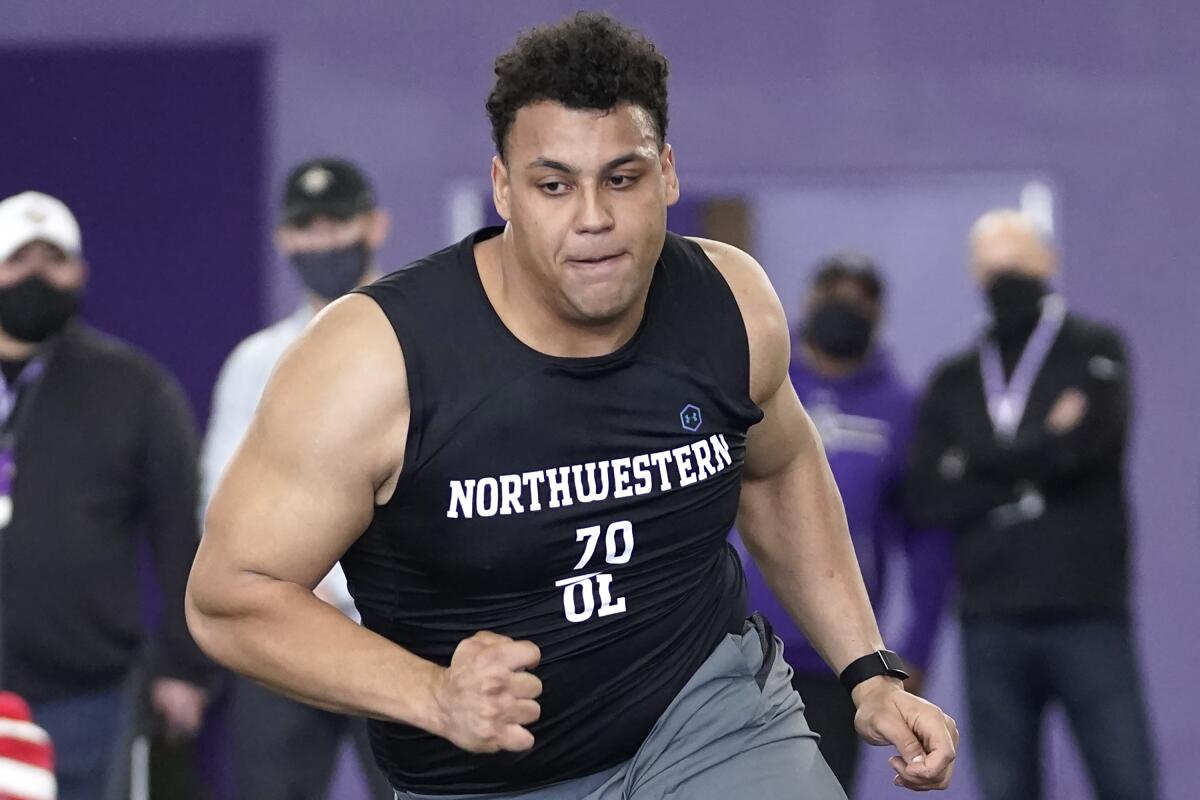
- Share via
When Tom Telesco took an offensive lineman in the first round most recently, the pick immediately was criticized by many observers as being a reach.
He could draft a tackle at No. 13 overall Thursday and already there is talk of reach.
This time, though, the subject is actual reach, as in the arm length of the leading tackles coming out of college.
“It’s something we’ve looked at since I’ve been in this business,” said Telesco, who is preparing for his ninth draft as Chargers general manager. “It’s not the biggest trait we look for, but it’s part of it. I don’t get too caught up in the arm length.”
Among the tackles widely considered to be the best available, Christian Darrisaw is one of the few with a reach in excess of 34 inches, the most talked-about standard. The arms of the former Virginia Tech tackle have been measured at 34.5 inches.
Beneath its polished exterior, the NFL draft can often be a confusing time for team executives and players. Here are some amusing stories from past drafts.
Many of the other top tackles, including Penei Sewell (Oregon) and Rashawn Slater (Northwestern), come up a bit short.
“You look at the different tackles that are playing in this league,” Telesco continued. “There are some with very long arms, some with less than 33-inch arms and, really, their performance is no different.”
The advantages of having long arms are obvious when the job description includes keeping defenders away from the quarterback. But an offensive lineman with shorter arms can make up the difference with things such as footwork and lateral quickness.
Telesco said there are at least three qualities that trump how far a lineman can reach.
“Personally, I look more at athletic ability, strength, football intelligence,” he said. “I would probably hit those three — just off the top of my head — first before I worried about arm length.”
Chargers coach Brandon Staley finds it “refreshing” and “exciting” to see quarterback Justin Herbert committing to improving after a strong 2020 season.
The Chargers have rebuilt their offensive line and still need a left tackle. Slater and Darrisaw are the names that most often have been linked to them at No. 13.
Drafting Sewell almost certainly would require a trade up inside the top 10. Detroit, at No. 7, is one team known to be looking to move down.
Last year, Telesco moved into the first round for a second pick, linebacker Kenneth Murray Jr. at No. 23. Telesco never has given up a future first-round pick to move up, however, something that might be required to secure Sewell.
“Those are heavy, heavy discussions to do that,” he said. “I think we have a pretty intelligent scouting staff, both college and pro. But predicting next year, what that draft really is going to look like in the first round. … I know people say they can do it, but it’s hard to do.”
Rebuilding the offensive line seems to be a theme in the AFC West as Broncos, Chargers, Chiefs and Raiders prepare for the NFL draft.
“It would have to be a unique circumstance, I think, for us to do that. But you gotta be flexible.”
Telesco hasn’t used a first-round pick on an offensive lineman since 2013, his first year with the Chargers. With the 11th selection that year, he took D.J. Fluker out of Alabama.
Fluker started 59 games over four years before the Chargers cut him in March of 2017. He produced a solid rookie season playing right tackle, but his performance steadily slipped, the Chargers eventually moving him to guard.
Fluker has since played with the New York Giants, Seattle and Baltimore. He started eight games for the Ravens in 2020. Now 30, Fluker signed this month with Miami.
More to Read
Go beyond the scoreboard
Get the latest on L.A.'s teams in the daily Sports Report newsletter.
You may occasionally receive promotional content from the Los Angeles Times.

